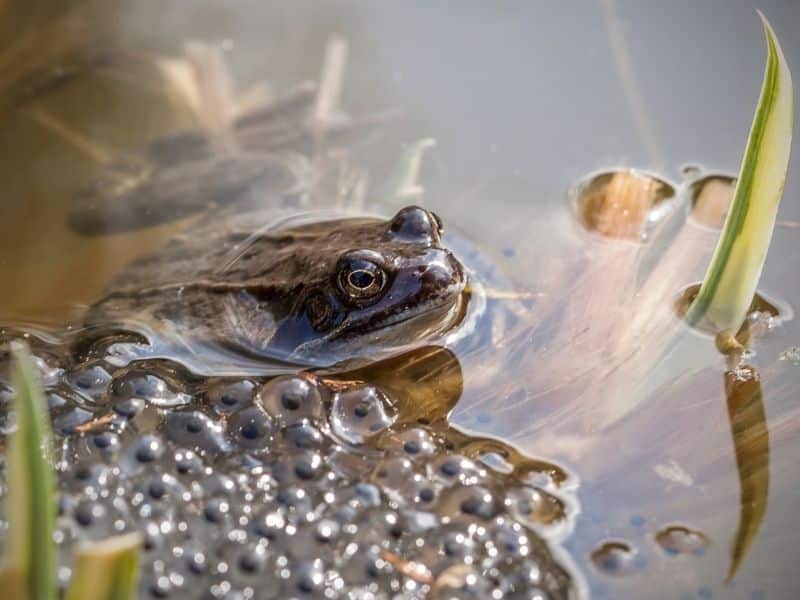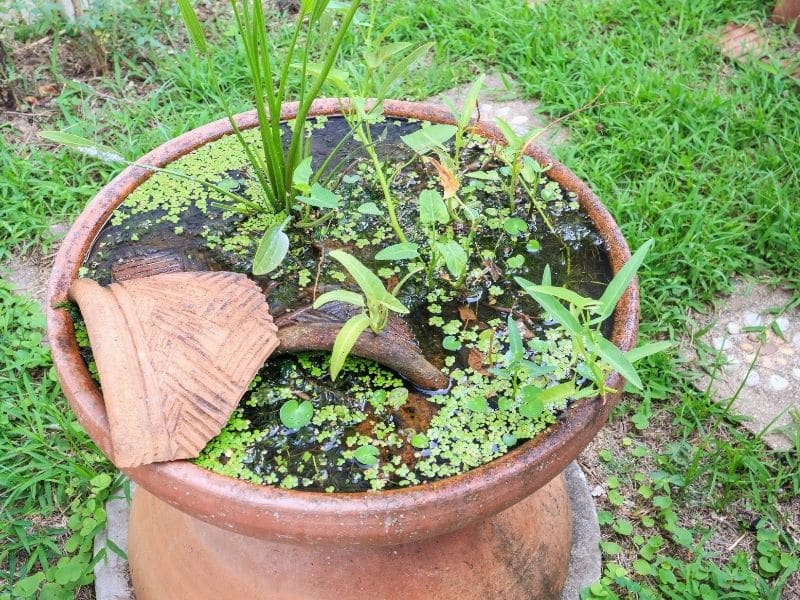Have you spotted any frogs emerging from hibernation yet? Now that spring is here, you’ll probably start to see frogs and other amazing amphibians around ponds, bogs, and other damp areas where they are searching for a partner to breed with. In fact, frog spawn is already popping up in many garden ponds.

Making spaces for wildlife is really important, especially in urban areas where many natural habitats have been lost to development. Ponds and wetlands are some of the most at-risk habitats, with the number of these spaces dramatically declining over the last century. As well as supporting frogs, ponds can support a huge range of insects, amphibians, birds, and even bats.
So, can you make a space for wildlife in your garden? Even a small container pond can bring a big boost for wildlife.
How to build a wildlife pond

First, plan your pond carefully. Think about how big you’d like it to be, and where the best location in your garden is. Ideally, it needs to get plenty of sun and be in a safe spot where children and pets can be supervised at all times, or where their access can be restricted. Remember, nature isn’t always neat and tidy, so frog ponds don’t have to be perfect. The most important thing to remember is to try and create different depths (including really shallow bits) to attract a wider range of wildlife and to remember to make ramps so that anything that accidently falls into your pond can leave easily and quickly.
You’ll need:
- A spade
- A large container or pond liner
- Stones, bits of wood, and old bricks
- Native pond plants
- Plan your pond outline with a hose pipe or string. If you are using a container or preformed liner, then make sure your hole will be the right size. Then get digging!
- Once your hole has been dug, you can place your liner or container in the hole. If your soil is really rocky then try to remove any sharp stones or fill the bottom of your hole with builders’ sand or a pond liner underlay.
- Wait for the rain! Using rainwater is the best way to fill your pond as drinking water contains additives that are great for people, but potentially harmful for wildlife.
- As your pond is filing you can add plants, bricks, stones, and wood to your pond. This helps it to look more natural, but also provides ramps and access for wildlife. Remember, most things that go into your pond will need to come out again.
- Wait for the frogs to flock to your garden. It might take time, but plenty of other creatures will visit in the meantime.

If you don’t have somewhere to dig a pond, then don’t despair! You can still make an amazing wildlife feature. Try using old, clean containers instead. Old barrels, washing up bowls, plant pots, and troughs can all make beautiful wildlife friendly mini water habitats.
What do frogs eat?
Frogs are a gardener’s best friend, as they love to eat snails and slugs (so remember not to use slug pellets which will kill our amphibian friends). They also eat worms, flies, and moths. On the other hand, tadpoles eat tiny insects and algae, which will probably establish fairly rapidly in your pond before reaching a balance. A well-established pond and a wildlife friendly garden should provide plenty of froggy food.
Do frogs always live in the water?
Depending on how active the frog is, they might spend months underwater! This is because they hibernate in winter and bury themselves in muddy pond bottoms. For the rest of the year you can expect your frogs to dip in and out of the water, so make sure they have somewhere shady, cool and damp to hide in when they leave the water.
Can I take frogspawn from another pond?
No, you should never disturb frogspawn. It will disrupt their development and could spread diseases. Plus, new frog ponds may not be established enough to support amphibians straight away, so let your frog families move in and settle down at their own pace.
Do I have frogspawn or toadspawn?
Frogspawn looks like balls of jelly clumped together, whereas toadspawn is laid as a big, long string of eggs. Once your tadpoles are a few weeks old take a look at their colour, toad tadpoles are black, whereas frog tadpoles are green with flecks of gold.

